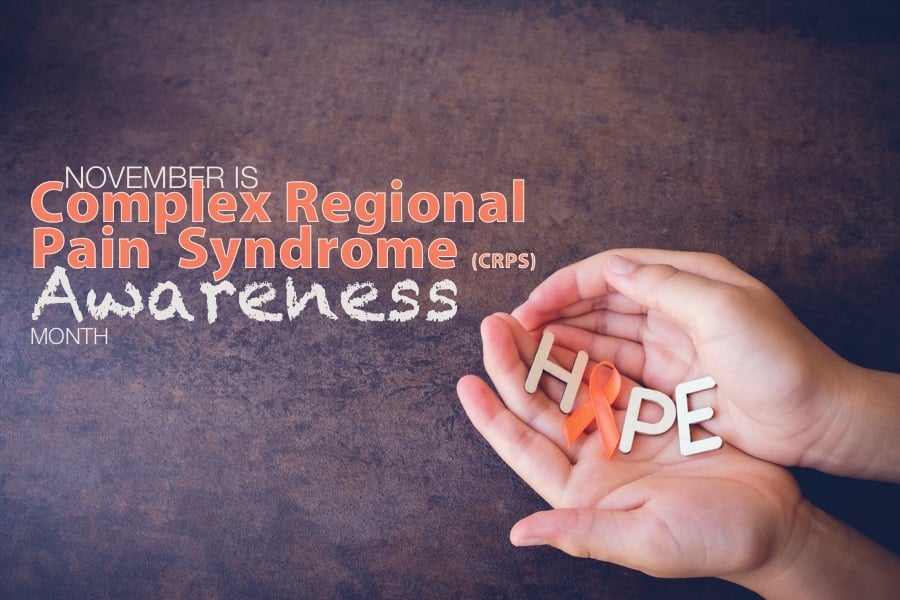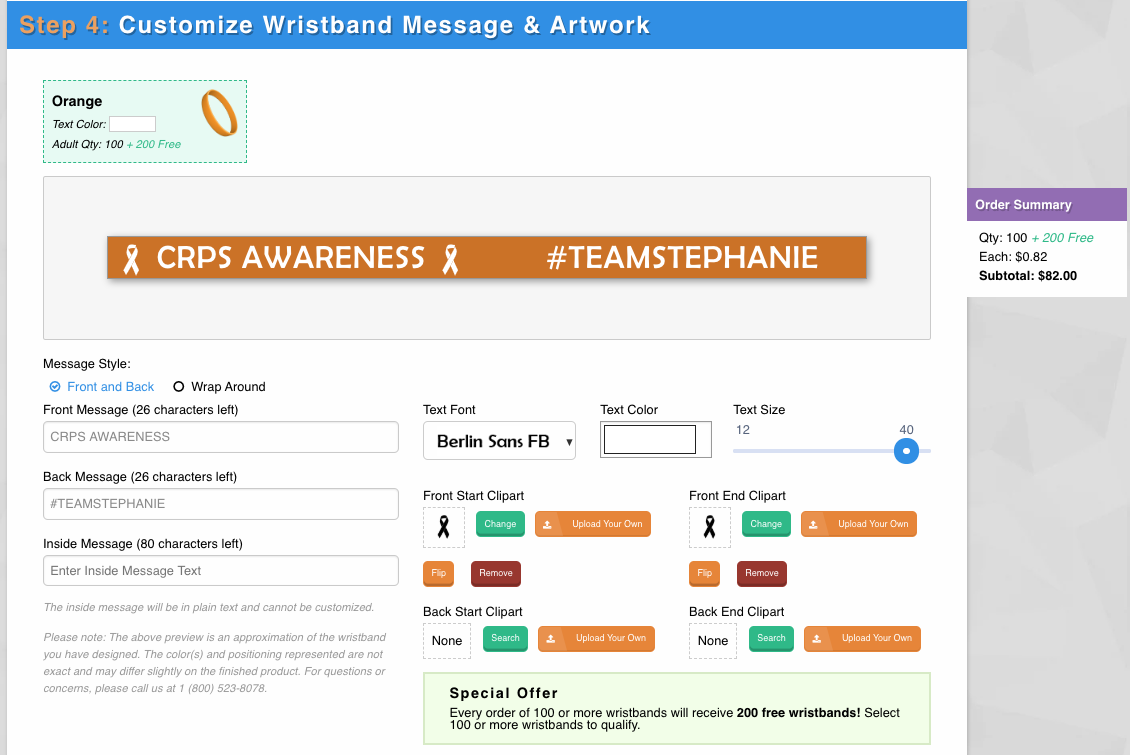
November is CRPS Awareness Month.
Complex Regional Pain Syndrome (CRPS) is a painful and long-lasting condition. CRPS usually causes severe, constant, burning chronic pain in the affected arm or leg.
The cause of CRPS remains unknown. However, this condition can be triggered by damage to nerve fibers in tissue that has been injured.
Experts believe that in CRPS, nerves become overly sensitive. Painful signals become more painful. And common stimuli, such as light touch and temperature changes, also are experienced as pain. [1]
Many experts consider CRPS to be the most painful disease known to man. [2]
FACTS ABOUT COMPLEX REGIONAL PAIN SYNDROME
- There are two similar forms of complex regional pain syndrome, called CRPS-I and CRPS-II.
- CRPS-I (previously known as reflex sympathetic dystrophy syndrome) are individuals without unconfirmed nerve injuries.
- CRPS-II (previously known as causalgia) are patients that have confirmed or diagnosed nerve injuries.
- The majority of patients are between 30 and 55 years of age (average 45 years).
- Women are affected three times more commonly than men.
- Treatment is usually done through the use of medication, physical therapy, and sympathetic or other nerve blocks that will help relieve the pain of CRPS or cause the condition to go into remission.
- The condition may take several months or years to settle down.
- approximately 75% will return to normal or near-normal
- about 15% have moderate permanent disability
- about 10% have severe permanent disability
- 50% of patients with untreated symptoms lasting for more than 1 year will have profound residual impairment. [3]
CRPS SIGNS AND SYMPTOMS
The key symptom is prolonged severe pain that may be constant. It has been described as “burning,” “pins and needles” sensation, or as if someone were squeezing the affected limb.
The pain may spread to the entire arm or leg, even though the injury might have only involved a finger or toe.
In rare cases, pain can sometimes even travel to the opposite extremity.
There is often increased sensitivity in the affected area, known as allodynia, in which normal contact with the skin is experienced as very painful.
People with CRPS also experience changes in skin temperature, skin color, or swelling of the affected limb. This is due to abnormal microcirculation caused by damage to the nerves controlling blood flow and temperature.
As a result, an affected arm or leg may feel warmer or cooler compared to the opposite limb. The skin on the affected limb may change color, becoming blotchy, blue, purple, pale, or red.
Other common symptoms of CRPS include:
- changes in skin texture on the affected area; it may appear shiny and thin
- abnormal sweating pattern in the affected area or surrounding areas
- changes in nail and hair growth patterns
- stiffness in affected joints
- problems coordinating muscle movement, with decreased ability to move the affected body part
- abnormal movement in the affected limb, most often fixed abnormal posture (called dystonia) but also tremors in or jerking of the limb. [4]
HOW TO RAISE CRPS AWARENESS WITH WRISTBANDS
Go to RapidWristbands.com, and click on the “Order Now!” button.

Choose your desired style and size. The most common size is ½” and the most popular and durable style is the Ink Injected.

Since orange is the color of CRPS Awareness, we’ll choose solid orange wristbands, and type in the quantity we want. (Remember, when you order 100, you get 200 free. If you want to take advantage of this deal, just type “100” in the quantity, and the site will add 200 automatically.)

Now, we get to design our wristbands! This is easy and fun.

As you can see above, the “front message” is what’s visible on the left side, and the “back message” is what you see on the right. Fill in whatever details you want, choose a font, and add clipart if you want. It’s really that easy.
Once you are sone with your design, scroll down to choose any add-ons you may be interested in, and to pick your desired delivery date. Once you’re done, add the order to your cart, and check out using our secure checkout system.

Resources:
"Complex Regional Psin Syndrome (CRPS)" [1]
"Mcgill Pain Index - Where Is CPRS Pain Ranked?" [2]
.png)
.png)
.png)

.png)
.png)

.png)
.png)
.png)
.png)
.png)
.png)
.png)
.png)
.png)
.png)
.png)
